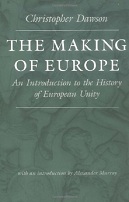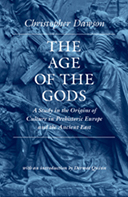This was a booklet published in 1957, consisting of an introduction and two studies originally published in The Tablet (a Catholic weekly magazine). This would no doubt account for the space given in the final part of the booklet to the future of Christianity in the East. It was subsequently incorporated into The Movement of World Revolution. This work addresses the dangers of nationalism and religion which still dominate the news today.
Central Themes
In the 20th century “an apocalyptic age,” as Dawson describes it many Eastern cultures (such as India, Pakistan, Turkey, Syria and China, to name but a few), followed by large parts of Africa, adopted a secular nationalistic ideology. Nationalism became a prevailing force and the strong feelings it generated were generally directed against the West, mainly as a result of the exploitation those people had suffered under colonial rule, but also fuelled by Communist propaganda, which used these states as a cold war weapon.
One of the key ideas of this booklet is that the very ideas that gave rise to these anti-Western nationalistic tendencies had come from the West itself. When Christendom was in the Middle Ages, the dominant civilizations in the world had been those of the East. But as Western technology and efficiency began to take over, the elites of those cultures realized that they needed to learn from the West if they were to make a place for themselves in this new world and share in its benefits. So they travelled to the West to study and, on their return, became ‘apostles’ not only of the new technology but also of the ideas of the West, such as freedom, democracy, social justice and, importantly, the separation of religion and politics – the secular state.
In this scenario, Dawson considers two main issues: nationalism and religion. Nationalism, he claims, “has never been a force for peace. […] As a means of evoking common loyalty and common action within a single society, there is no denying the value and efficiency of nationalism. But as an ultimate principle of human action, it is morally inadequate and socially destructive. Left to itself, it becomes a form of mass egotism and self-idolatry which is the enemy of God and man.”
These statements are understandable in the light of the recent memories of the 2nd World War, which were still fresh in people’s minds, and Dawson saw the same forces arising among the peoples of the East and could see no good coming of it. However, he makes an interesting distinction between nationalism and national life, quoting from the Pope’s Christmas message of 1954. It is good for each nation to celebrate its own distinctive characteristics. The problem arises when nationalism becomes a political movement and stirs up hatred and division.
Dawson points out that all the great civilizations of the past realized this danger and “admitted the existence of a higher law above tribe and nation and consequently subordinated national interest and political power to the higher spiritual values which are derived from this source.” So could religion be an answer?
It is a mark of Dawson’s impartiality and intelligence that, despite his own religious faith, he freely admits that religion itself has often been the cause or pretext of countless wars and persecutions and asks the pertinent question: “Is it not possible that conflicts would be intensified by the injection of religious intolerance?” He gives as an example the massacres that occurred after the partition of India and the assassination of Gandhi, which were mainly motivated by religious differences.
In this way he highlights a paradox which is difficult to resolve: on the one hand, belief in a higher spiritual power is needed to transcend the dangers of nationalism; on the other hand, there is the danger of religious fanaticism. Dawson does not propose a political solution, but rather hopes for the spread of Christianity among the peoples of the East as a way of fulfilling the unsatisfied spiritual needs left by the secularism of modern nationalist states.


